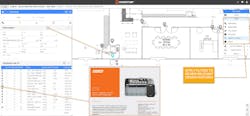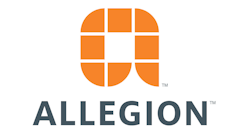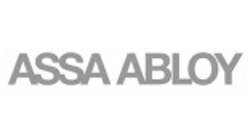If you spend enough time with a security design professional, at some point you will undoubtedly hear them lament the door hardware coordination process.
Door hardware is a tough subject: limitless part numbers, an evolving technology landscape, and a library of jargon unto itself make understanding the intricacies of door hardware seem like a PhD-level exercise. As security consultants and engineers, the onus is, of course, on us to make sure door hardware is coordinated with the security access control and alarm monitoring design.
Historically, this has been an inconsistent and imperfect process. The architect, door hardware consultant, and security designer are developing and reviewing door hardware schedules separately and in parallel, which ensures some changes are lost or superseded by others. It is also time-consuming – particularly on large projects involving hundreds or thousands of doors.
Making the Job Easier
Thankfully, the bellwethers of the door hardware industry have developed and refined helpful technical tools to help manage the process. Allegion’s Overtur platform and ASSA ABLOY’s Design Studio are two examples. I recently attended a presentation on Overtur and had a chance to discuss the software with Shawn Foster, Allegion’s Overtur Content Strategist.
Overtur is a web-based platform developed by Allegion to manage the door hardware lifecycle, from design to commissioning and retrofit. It serves as an online repository for all door hardware information for a given project. It enables real-time collaboration between the project team and the door hardware consultant – providing a live forum to review and comment on door hardware sets, review part numbers, cross-reference door hardware sets and floor plans, and see cut sheets without having to scour the internet.
The genesis of Overtur was in helping solve a major pain point in the architecture industry, and it evolved from there. “Overtur was initially inspired by looking at our industry and recognizing that the problem wasn’t necessarily in content creation, but in coordination,” Foster explains. “Misconstrued information is one of the major issues across any project. Overtur is a key part to the services Allegion provides, particularly in the architectural industry, where we provide hardware consultation and specification writing services. As Overtur’s use grew and other project collaborators and stakeholders were involved on projects, the inclusion of those roles (such as security consultants) throughout the opening’s life cycle naturally emerged.”
As security professionals, we are often focused on finding and validating the door hardware for a subset of the overall project. From a data perspective, Overtur combines the disparate information from the opening schedule, the opening’s hardware information and the plan, and presents it for all to use.
“The ability to use the data to quickly find information is a hallmark of Overtur – for example, finding electrified openings for a security consultant could take hours on a large project,” Foster says. “Using Overtur, that task is reduced to seconds, allowing the consultant to quickly move along their tasks and use their expertise. The use of notes provides a communication history around clarifications and questions in context of the opening. Information is versioned to provide an audit history throughout the life-cycle of the opening – from design through construction, handover, maintenance, and ultimately demolition and re-design.”
New Developments
Allegion continues to refine and evolve the Overtur platform – for example, its new “Roles & Rights” capability. While all project members could comment and report on information, Allegion personnel were the only project members who could add, edit, or configure opening hardware. By adding specific roles that grant certain rights, the platform opens the ability to create hardware on an opening to those on the project with the proper role. “Project Owners can change that role as required,” Foster says.
Site Survey tools within the mobile app have also been developed and added. “Mobile historically included an Installation Status app to indicate what parts of the opening are installed, and a Punch List app that allows the verification of the hardware on the opening,” Foster explains. “Both tasks happen during construction. Site Survey helps to round out the journey by providing a way to validate the current condition of the opening – it can be used at the beginning of a project or years after turnover to verify current conditions.”
Those seeking to learn more about Overtur can visit https://discover-overtur.allegion.com. Additionally, visit https://us.allegion.com/en/home/locator.html to reach out to local Electronic Sales Engineers or other consultants at an Allegion regional sales office to setup discussion around Overtur.
For those interested in ASSA ABLOY’s Design Studio, visit www.thegooddesignstudio.com.
Brian Coulombe is Principal and Director of Operations at DVS, a division of Ross & Baruzzini. Contact him at [email protected], through Linked in at www.linkedin.com/in/brian-coulombe, or on Twitter @DVS_RB.





